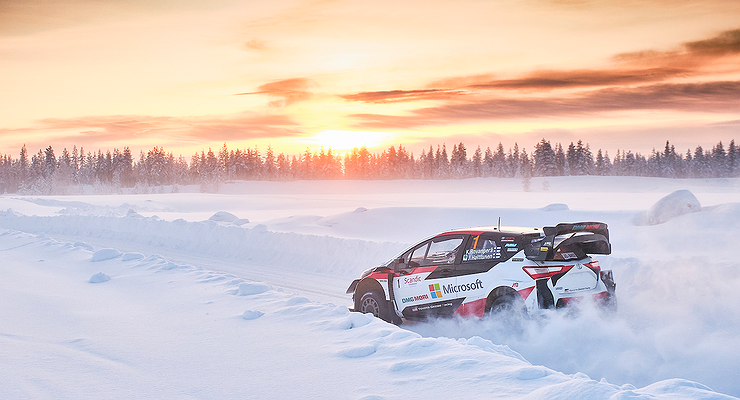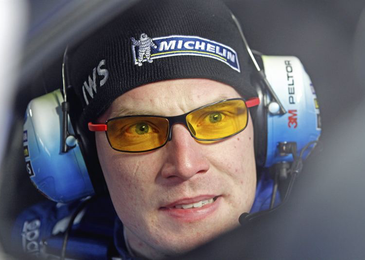Why do all drivers have to wear yellow glasses in winter?
- December 8, 2022
- 0
In winter, every driver should have glasses available. And not blue, not green, not purple, but yellow! And this choice is completely independent of how good your eyesight
In winter, every driver should have glasses available. And not blue, not green, not purple, but yellow! And this choice is completely independent of how good your eyesight

In the cold, the world around us becomes somewhat monotonous in terms of color. Everything becomes white or black. In addition, the white color scheme predominates with a hint of blue, mercilessly burning out the retinas of the drivers’ eyes. After all, in winter the sun is not high, so the light reflected by the snow provides additional lighting. And in this case, the experts of the AvtoVzglyad portal recommend using dark glasses.
If they use polarized glasses, the degree of eye protection increases. True, it is very important that the design of the frame does not reduce the field of view in the horizontal plane: after all, there are other cars in urban traffic. So with good lighting – and especially in the city – it will be easy to make out the road. So it becomes much easier to drive a car.
With the onset of dusk, and especially outside the city, the situation changes. If the road is covered with snow, it is very difficult to distinguish the canvas from the side of the road. Sometimes you only recognize a turn because there is a high-voltage line or the edge of a forest next to the roadway. But these are not very reliable clues. And the black glasses you’ve been using during the day are starting to get in the way.
In addition, the sun sets very quickly in winter, but the human eye changes extremely slowly from day to night vision. As a result, at dusk you may encounter a situation where you cannot distinguish between a snowy road surface and virgin snow. Because of this, city drivers often get into accidents when they try to drive straight where the road actually turns. In addition, even modern LED headlights do not always allow you to correctly assess the situation. Is there any way to deal with this situation? There is! You just need to change the glasses with dark glasses for glasses with yellow ones. What does it matter?
First, yellow filters block light in the blue part of the spectrum, which significantly reduces the risk of glare and eye glare. Second, “yellowness” increases the intelligibility of the “image” at dusk. And that’s exactly what we need. Of course, the darker it is, the lighter the yellow filter should be, so as not to absorb too much light. And third, any driver driving a car with yellow glasses looks like a confident professional. No wonder rally drivers wear glasses with yellow filters during winter races.
So, in the list of things that the driver should have in the car, there should be black glasses for the bright sun and yellow ones for dusk and night. True, we must not forget that the latter change the usual colors of road signs and traffic lights. This effect must be taken into account in order not to accidentally lose sight of vital information.


In the cold, the world around us becomes somewhat monotonous in terms of color. Everything becomes white or black. In addition, the white color scheme predominates with a hint of blue, mercilessly burning out the retinas of the drivers’ eyes. After all, in winter the sun is not high, so the light reflected by the snow provides additional lighting. And in this case, the experts of the AvtoVzglyad portal recommend using dark glasses.
If they use polarized glasses, the degree of eye protection increases. True, it is very important that the design of the frame does not reduce the field of view in the horizontal plane: after all, there are other cars in urban traffic. So with good lighting – and especially in the city – it will be easy to make out the road. So it becomes much easier to drive a car.
With the onset of dusk, and especially outside the city, the situation changes. If the road is covered with snow, it is very difficult to distinguish the canvas from the side of the road. Sometimes you only recognize a turn because there is a high-voltage line or the edge of a forest next to the roadway. But these are not very reliable clues. And the black glasses you’ve been using during the day are starting to get in the way.
In addition, the sun sets very quickly in winter, but the human eye changes extremely slowly from day to night vision. As a result, at dusk you may encounter a situation where you cannot distinguish between a snowy road surface and virgin snow. Because of this, city drivers often have accidents when they try to drive exactly where the road actually turns. In addition, even modern LED headlights do not always allow you to correctly assess the situation. Is there any way to deal with this situation? There is! You just need to change the glasses with dark glasses for glasses with yellow ones. What does it matter?
First, yellow filters block light in the blue part of the spectrum, which significantly reduces the risk of glare and eye glare. Second, “yellowness” increases the intelligibility of the “image” at dusk. And that’s exactly what we need. Of course, the darker it is, the lighter the yellow filter should be, so as not to absorb too much light. And third, any driver driving a car with yellow glasses looks like a confident professional. No wonder rally drivers wear glasses with yellow filters during winter races.
So, in the list of things that the driver should have in the car, there should be black glasses for the bright sun and yellow ones for dusk and night. True, we must not forget that the latter change the usual colors of road signs and traffic lights. This effect must be taken into account in order not to accidentally lose sight of vital information.
Source: Avto Vzglyad
Donald Salinas is an experienced automobile journalist and writer for Div Bracket. He brings his readers the latest news and developments from the world of automobiles, offering a unique and knowledgeable perspective on the latest trends and innovations in the automotive industry.